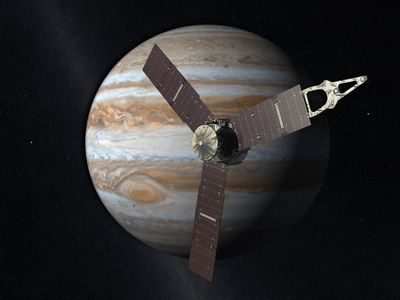
Launching from Earth in 2011, the Juno spacecraft will arrive at Jupiter in 2016 to study the giant planet from an elliptical, polar orbit. Juno will repeatedly dive between the planet and its intense belts of charged particle radiation, coming only 5,000 kilometers (about 3,000 miles) from the cloud tops at closest approach.
Juno's primary goal is to improve our understanding of Jupiter's formation and evolution. The spacecraft will spend a year investigating the planet's origins, interior structure, deep atmosphere and magnetosphere. Juno's study of Jupiter will help us to understand the history of our own solar system and provide new insight into how planetary systems form and develop in our galaxy and beyond.
Juno's principal investigator is Scott Bolton of Southwest Research Institute in San Antonio, Texas. NASA's Jet Propulsion Laboratory in Pasadena, Calif., manages the mission. Lockheed Martin Space Systems of Denver, Colo., is building the spacecraft. The Italian Space Agency, Rome, is contributing an infrared spectrometer instrument and a portion of the radio science experiment.
See the website for more details. http://www.nasa.gov/mission_pages/juno/multimedia/pia13746.html(SY)
